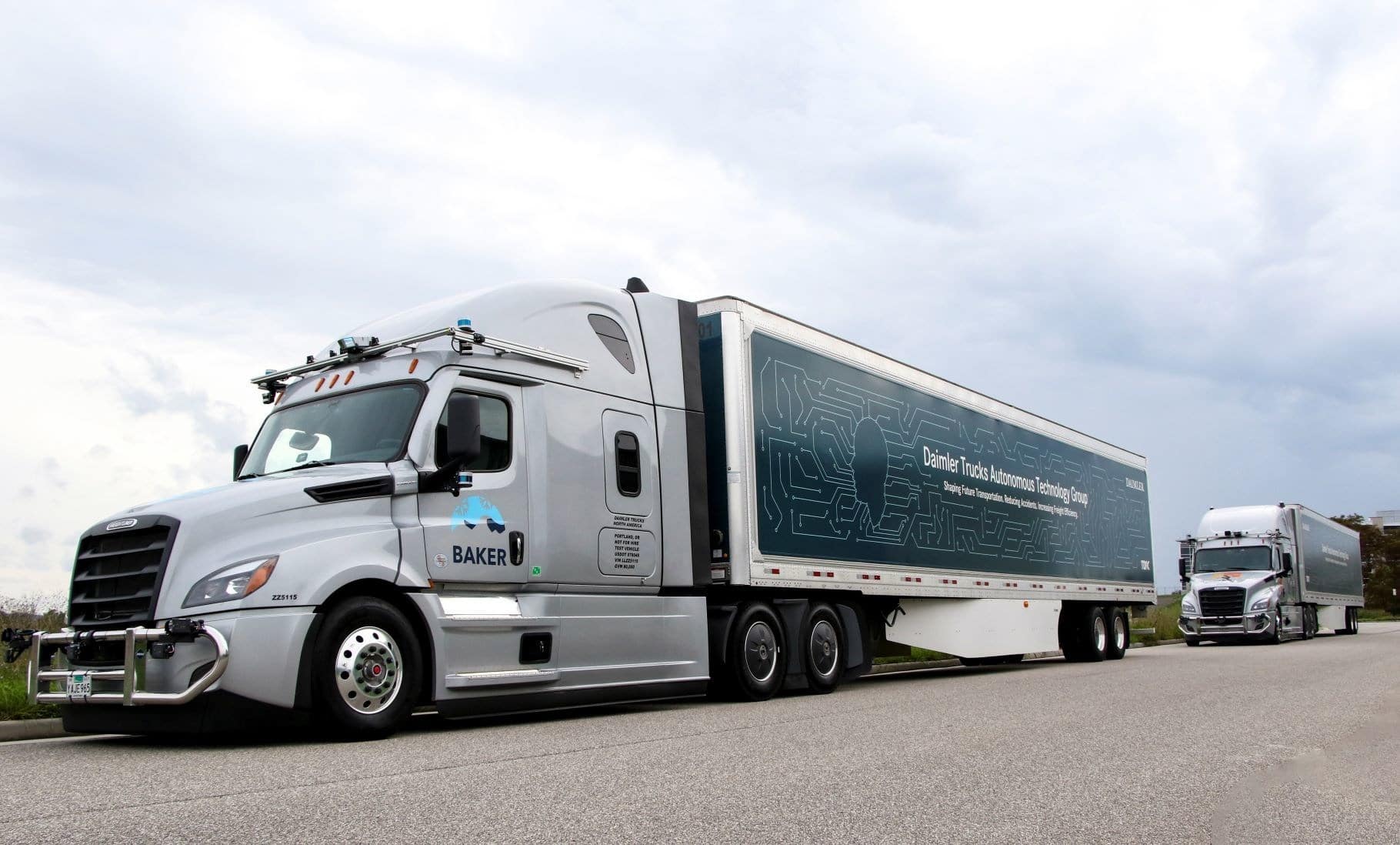By MORGAN LEE Associated Press
SANTA FE, N.M. (AP) — Daimler Trucks and allied vehicle software company Torc Robotics announced Thursday the expansion of testing for self-driving trucks to public roads in New Mexico along major long-haul freight routes.
The companies have established a new testing center in Albuquerque, as they begin automated runs for 18-wheel vehicles with autonomous diving technology on public highways — supported by a human driver and a safety conductor.
Daimler’s Autonomous Technology Group has taken aim at commercializing self-driving trucks within a decade, and the new testing location complements ongoing research on roadways in Virginia with milder weather and fewer steep hills.
“The reason that we started the test center in Southwest is, one, there’s a lot of cargo that gets transported in that region,” Torc Robotics CEO Michael Fleming said. “We’re not really faced with severe snow and ice like we find it the Northeast, and at the same time, the environmental terrain is a little bit easier as well.”
Arizona already serves as a major testing ground for autonomous vehicles, including a public-private partnership involving major public universities that was announced in 2018. Arizona Gov. Doug Ducey suspended Uber’s self-driving vehicle testing privileges in March 2018 in the wake of a pedestrian fatality in a Phoenix suburb.
Daimler’s testing routes in New Mexico are not publicly disclosed, thought the trucks are prominently labeled as Daimler autonomous-driving vehicles.
The on-board, self-driving technology keeps trucks on track by using a combination of sensors that employ radar, cameras and lasers for measuring distances.
In a news release, the companies said all automated runs require both a safety conductor and a safety driver who holds a commercial driver’s license and undergoes special training in extreme vehicle dynamics and automated systems.
Fleming said that engineering challenges in autonomous trucking revolve around responses to other moving vehicles.
“The real challenge comes when we have bad actors or other vehicles on the road doing things that they shouldn’t be doing,” he said. “When you have one bad actor, it’s not that complicated. But when you have clusters of bad actors, things become much more challenging and difficult. One of the things that we’ve spent a lot of time doing is figuring out what’s the most appropriate action or behavior in some of these complex situations.”
Torc says it has tested its self-driving vehicle system in many states in the U.S., including a cross country trip in 2017.
The New Mexico research center suggests an increasing commitment to autonomous driving by Daimler Trucks & Buses, which delivered roughly a half-million trucks and buses to customers in 2019.





